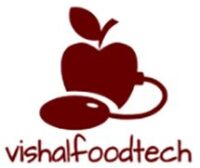Table of Contents
What are Pectic Substances?
Pectic substances are a group of complex carbohydrates that are found in the cell walls of plants. They are made up of chains of sugar molecules that are linked together by glycosidic bonds. Pectic substances are divided into four main types:
- Protopectin: This is the most insoluble form of pectin. It is found in the cell walls of young plants and is converted to other forms of pectin as the plant matures.
- Pectic acid: This is a soluble form of pectin that is found in the middle lamella of plant cells. It is responsible for giving plant cells their strength and rigidity.
- Pectinic acid: This is a more soluble form of pectin than pectic acid. It is found in the primary cell walls of plant cells.
- Pectin: This is the most soluble form of pectin. It is found in the middle lamella and primary cell walls of plant cells. It is responsible for the gelling properties of fruits and vegetables.
Structure of Pectic Substances
Pectic substances are made up of chains of sugar molecules that are linked together by glycosidic bonds. The sugar molecules in pectic substances can be either glucose or galactose. The glycosidic bonds can be either α-1,4 or α-1,6.
The structure of pectic substances can vary depending on the type of plant and the stage of growth. In young plants, pectic substances are mostly in the form of protopectin. As the plant matures, protopectin is converted to other forms of pectin, such as pectinic acid and pectin.

Functions of Pectic Substances
Pectic substances have a number of important functions in plants, including:
- Giving plant cells their strength and rigidity: Pectic substances help to hold plant cells together and give them their strength and rigidity. This is because the pectin chains form a network that helps to bind the cells together.
- Binding cells together: Pectic substances help to bind cells together, forming a network that helps to keep the plant structure intact. This is important for preventing the plant from collapsing.
- Transporting water and nutrients within the plant: Pectic substances help to transport water and nutrients within the plant, allowing the plant to grow and thrive. This is because the pectin chains form channels that allow water and nutrients to flow through.
- Regulating the ripening of fruits and vegetables: Pectic substances play a role in the ripening of fruits and vegetables. As fruits and vegetables ripen, the pectin chains break down, which makes the fruit or vegetable softer and easier to eat.
- Inducing the formation of calluses: Pectic substances can induce the formation of calluses, which are protective layers that form over wounds on plants. This helps to protect the plant from infection.
- Promoting wound healing: Pectic substances can help to promote wound healing by stimulating the growth of new cells.
Uses of Pectic Substances
Pectic substances are also used in a variety of food and industrial applications, including:
- As a thickener, stabilizer, and gelling agent in food products: Pectin is a natural gelling agent that is used in many food products, such as jams, jellies, and puddings. It can also be used as a thickener and stabilizer in other food products, such as sauces and salad dressings. Pectin is also used in the production of some dairy products, such as yogurt and ice cream.
- In the production of textiles, paper, and other materials: Pectic substances can be used to produce a variety of materials, including textiles, paper, and adhesives. Pectin is used in the production of textiles because it helps to give the fabric strength and durability. Pectin is also used in the production of paper because it helps to make the paper strong and smooth.
- In the pharmaceutical industry: Pectic substances can be used to produce a variety of pharmaceutical products, such as capsules and tablets. Pectin is used in the pharmaceutical industry because it is a safe and effective way to deliver medication to the body.
- In the cosmetics industry: Pectic substances can be used to produce a variety of cosmetics, such as lotions and creams. Pectin is used in the cosmetics industry because it helps to keep the products moist and prevents them from drying out.
Safety of Pectic Substances
Pectic substances are generally considered to be safe for human consumption. However, some people may experience digestive problems if they consume large amounts of pectin.

Conclusion
Pectic substances are a versatile group of compounds that have a number of important functions in plants and humans. They are used in a variety of food and industrial applications and are
- Pectic substances are found in the cell walls of all plants, but they are most abundant in fruits, vegetables, and seeds.
- The amount of pectic substances in a plant varies depending on the type of plant and the stage of growth.
- Pectic substances are made up of chains of sugar molecules that are linked together by glycosidic bonds.
- The different types of pectic substances are distinguished by the length of the sugar chains and the type of glycosidic bonds that link them together.
- Pectic substances play a number of important roles in plants, including:
- Giving plant cells their strength and rigidity
- Binding cells together
- Transporting water and nutrients within the plant
- Regulating the ripening of fruits and vegetables
- Inducing the formation of calluses
- Promoting wound healing
- Pectic substances are also used in a variety of food and industrial applications, including:
- As a thickener, stabilizer, and gelling agent in food products
- In the production of textiles, paper, and other materials
- In the pharmaceutical industry
- In the cosmetics industry
Pectic substances are a versatile group of compounds that have a number of important functions in plants and humans. They are used in a variety of food and industrial applications and are generally considered to be safe for human consumption.
